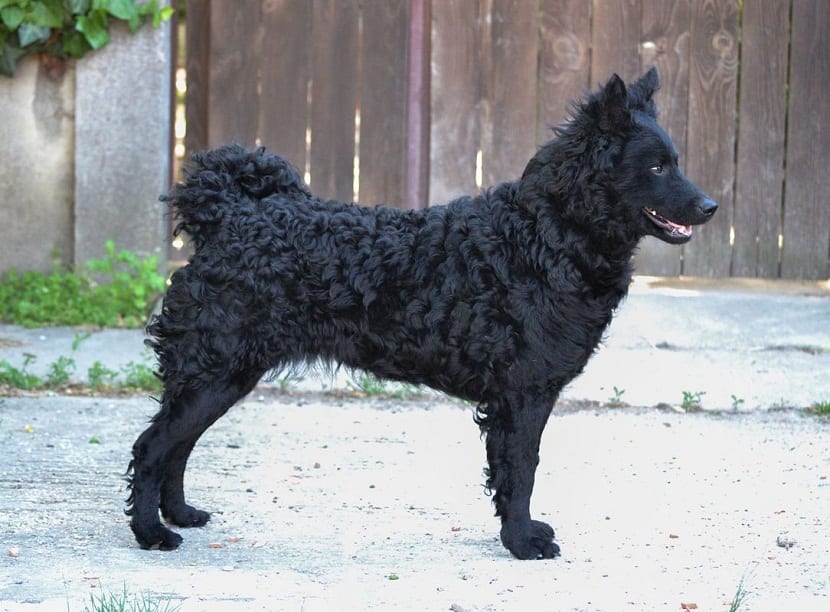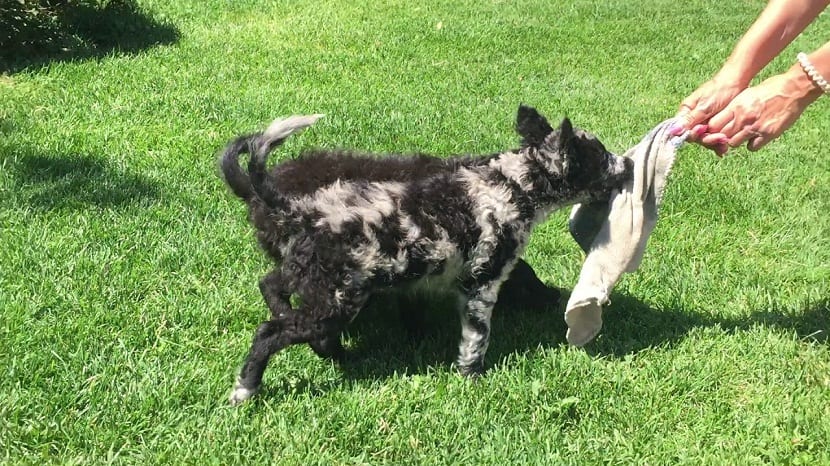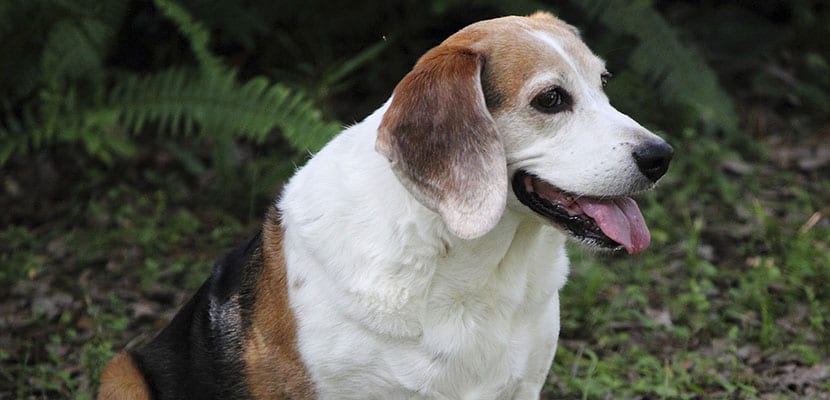
La Mudi dog breed It is not very popular or known to canine pet lovers. However, these animals are truly extraordinary and worthy representatives of the species. Mudi are of medium height and balanced between energy and rest, being versatile and diverse and highly adaptable.
The maintenance of these pets does not require a great investment of time or money, their fidelity is compared to that of companion dogs combined with the strength and courage of the guard dog. The Mudi breed has not spread throughout the worldTheir limits hardly exceed their country of origin, however this has been good for the breed that humbly has a lot to offer.
History or origin of the Mudi

The Mudi breed is not easy to track, documentation indicates that they were not specifically created by breeders who have applied Mendel's laws of genetics. Simply the Mudi appeared naturally after mixes made by Hungarian shepherds between the Puli, German Spitz and Pumi breeds.
Considering these data, the Mudi is a very modern breed that was really born in the 1936th century. The Hungarian shepherds only mixed looking for essential characteristics in the herding work and that it was an easy pet to maintain. The twentieth century was very moving for the breed, since it was not only created, but also achieved recognition thanks to Dr. Dezso Fenves who in XNUMX referred to it as a breed indigenous to Hungary.
Immediately after the Second World War broke out, a tragic period not only for humans but for many dog breeds and among them the Mudi, which almost became extinct. Conservationists saved some specimens that allowed the breed to continue.
Despite its extraordinary features, the Mudi is still a very local breed except for some specimens in Finland. They continue to work as sheepdogs and are increasingly gaining a space within homes.
Features
The Mudi is a dog considered of medium size with a height at the withers between 41 and 47 centimeters. Average weight is about 12kg. It is preferable that they do not weigh less than 12 kg or more than 13. The coat can be black, bay, ash, brown, white or blue.
The Mudi breed is classified according to the FCI in group 1 of sheepdogs and cattle dogs specifically section 1 herding dogs. As previously stated, it is of medium size with an almost square profile and with the upper line from the withers to the rump somewhat sloping.

The head is wedge-shaped, the eyes must be dark except those of a merle pattern which may have blue or brown eyes. The ears are high, erect and covered with hair. They have a triangular shape with independent mobility depending on the stimulus. They have a strong muzzle with a straight and tapered bridge of the nose, with tight lips similar in color to the nose.
Mudi have a strong neck of medium length and notable musculature. They do not have a double chin. The body is smooth, slender with hard and firm muscles and the back is short and straight and the tail follows the natural line of the rump. In alert state the tail is sickle-shaped and relaxed it is almost horizontal. The coat has a uniform and wavy and even curly coat, it is dense and not very long.
Temperament
At the character level, this is a very intelligent and active breed of dog. It shows special conditions in agility and talent for different canine sports. He has a great nose that is very useful in drug detection services.
The Mudi breed is highly regarded among Hungarian shepherds who highly value its animosity. Its maintenance does not represent a high cost. They bark at any stimulus and this has been encouraged by their herding work. Well trained it is controlled, however it is very useful as an alarm dog.
Although he is very active and always appreciates having a job or activity to do, he enjoys days off and does not get anxious to the point of destroying anything in his environment. In the sociable it will show characteristics of the shepherd dog, that is, accepts the presence of other animals although it is territorial with dogs. He tolerates children, but does not accept abuse so it is better to educate the little ones and keep them supervised, he will always try to shepherd them.
His character is spirited and accommodating, he enjoys adventure so the main risk is that he gets lost. He likes exercise and burying things. It is best to have space for him to run and play. Despite being attached to his owner, he shows no problems in making independent decisions. and provide entertainment by running and playing alone.
Basic care
The demands of the care of this pet are relatively low, well cared for has a life span between twelve and fourteen years. The most basic and main thing is to vaccinate and deworm it according to the vet's instructions. His main need is to expend energy, which is why he requires his daily dose of exercises and affection.
A moment that can strengthen the bond with the pet is brushing the fur and checking its ears and keeping them clean to avoid parasites and infections. The bath should not be frequent, only when required because it has a bad smell or is dirty.
Food and health

Food is essential to maintain the health of the pet. The nutrients you should consume are aimed at the medium breed, while he is a puppy, he must eat three times a day a feed aimed at his stage of development. Carnivorous animals require a higher protein intake in the case of dogs, it should be 85% of the diet. Obesity should be avoided and the diet adapted for when the pet is in advanced age.

When taking care of food, health will be an easier aspect. Vaccines and nutrients are covered It is not a breed that presents great complications when it comes to having genetic diseases.
Dogs with the physical characteristics of the Mudi tend to have a percentage of risk for bone malformation diseases such as hip dysplasia or elbow. The first affects the back limbs of the pet and the second the front. When they advance in age it is necessary to be aware of cataracts, it is not a specific eye disease of dogs but of any breed when they reach old age.
Finally, and although it is usually surprising, many breeds of dogs can suffer from epilepsy. This nervous system disease causes seizures in pets that usually worry the owners. However, with proper medical treatment, the dog can live normally without affecting its longevity period.